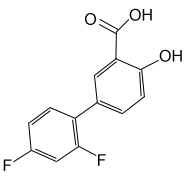In general, chain drug's increasing reliance on pharmacy sales, the aging population and trends toward self-medication an argue for a strong over-the-counter growth rate in 1993.
One of the hottest products for the new year is likely to be Sandoz Pharmaceuticals' Tavist-D and Tavist-1. The combination antihistamine and decongestant was switched from prescription only to OTC in October 1992, and a spokesman for Sandoz reports sales are already exceeding projections.
The new products are surpassing the expectations of retailers who haven't had a really hot new switch product to get excited about since Schering-Plough's Gayne-Lotrimin and Ortho's Monistat-7 hit the vaginal anti-fungal market nearly two years ago.
"I sent it out to the stores and it's doing just unbelievable[ly]," said K&B buyer Jude Eserman. "It has exceeded our expectations and I think it will continue to do well in 1993.
The Tavist products are being supported with a $ 45 million advertising campaign that likely to generate strong brand identity among consumers, especially during the current high demand cough and cold season.
The product introductions were particularly timely since other competing antihistamine switch candidates such as Marion Merrell Dow's Seldane and Johnson & Johnson's Hismanal both ran into adverse drug reaction problems at FDA. Seldane may clear the FDA hurdle soon by lowering the dosage or introducing a slightly different version that avoids troubling cardiac side effects.
For some time now, switch products have been dominating a lot of the growth in OTC category sales. Of the top 10 selling OTCs during the past year, nine are switch related. Of course, the FDA has the last word on which products hit the market in 1993.
Anticipated continued growth in OTC categories currently has many retailers retailers rethinking their space allocations, and many are preparing to expand those departments.
At K&B, Eserman said the chain's recently formed planogramming department is taking on the drug wall as its first project. "I wouldn't be surprised if we see an extension of the OTC department," he said.
Industry leader Walgreens has a thorough OTC department and Eckerd Drug is in the middle of an OTC expansion to accommodate anticipated increases in new products.
Digestive remedies
Another growth segment is the digestive remedies categories, which includes anti-diarrheals, laxatives and antacids.
OTC category manager Cindy Robinson said Eckerd's typical set for the categories is anywhere from 12 to 15 feet and it will be expanded by 6 feet. "We wanted to be a little more proactive and have some more space available to handle upcoming switches," Robinson said.
Antacids, a segment of the digestive remedy category, are also poised for major changes and could be the next blockbuster, says buyers. Glaxo's Zantac, SmithKline Beecham's Tagarnet, Merck's Pepcid and Marion Merell Dow's Carafate are all switch candidates and could hit the market in 1993. All these popular prescription drugs could certainly create a stir in the antacid category.
Carafate is rumored to stand the best chance of hitting the market first, since the other products act systemically through absorption in the blood stream and may be more prone to drug interactions.
Clinical trials have reportedly revealed reduced effectiveness at lower dosages. Carafate acts locally on the digestive tract and the likelihood of a drug interaction would supposedly be lessened.
Until those switches take place, the antacid category will continue to be ruled by Mylanta I a joint venture of Johnson & Johnson/Merck and Maalox by Rhone-Poulenc Rhorer. Mylanta has a nearly 19 percent share of drug store antacid sales, followed by Maalox with 13 percent.
Buyers expects Mylanta's new gelcap product of continue to do well and Maalox's new flavors will ensure the sustained popularity of that product.
Internal analgesics is another category that could post significant sales gains in 1993 if the FDA allows certain prescription only products to go OTC. Possible 1993 new product introductions include potential dynamos such as Syntex' Naprosyn, J & J/Merck's Dolobid and Ciba-Geigy's Voltaren.
Aspirn, ibuprofen and acetaminophen containing products are all projected to see their share of the analgesic market decline if the non-steroidal anti-inflammitories hit the market.
If Naprosyn, Dolobid and Voltaren are allowed to switch, industry sources estimate they will command 20 percent of the market by 1996, stealing share from such favorites as Tylenol and Advil.
Private label possibilities
Retailers' private label items could also very well be hot products in 1993, since some of the best sellers from previous years are now available.
For example, loperamide, the active ingredient in MeNeil Laboratories category leading anti-diarrheal is now available in a Pepto Bismol anti diarrheal formulation. Private label manufacturers such as Perrigo also have a loperamide product.
A private label version of miconozole nitrate, the active ingredient in Ortho's Monistat 7, is also newly available to retailers.
Gary Rocheleau, Thrifty Corp's senior vp of sales and merchandising, said that in 1993, that chain will be introducing a new line of homeopathic drugs called Longevity. "We want to be the complete neighborhood drug store," he said.
Other products that buyers suspect will move well in the coming year include the 1 percent hydrocortisone anti-itch products, Colgate's and Crest's version of baking soda toothpastes and the new line of Protegra vitamins by Lederle Labs.
COPYRIGHT 1993 Reproduced with permission of the copyright holder. Further reproduction or distribution is prohibited without permission.
COPYRIGHT 2004 Gale Group



